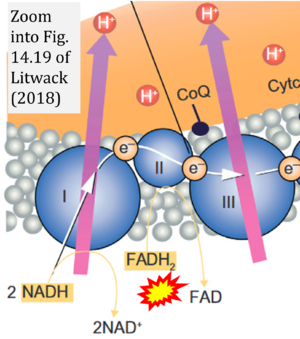Litwack 2018 Academic Press
| Litwack G (2018) Metabolism of fat, carbohydrate, and nucleic acids. In: Litwack G (ed) Human biochemistry, Academic Press, Chapter 14:395-426. https://doi.org/10.1016/B978-0-12-383864-3.00014-4 |
Litwack G (2018) Academic Press
Abstract: The clinical discussion is focused on Gaucher disease. Other topics in this chapter are lipid metabolism, fatty acid degradation, fat as storage energy, joint regulation of lipid and carbohydrate metabolism, glucagon and glucagon-like peptides, metabolism of cholesterol, sunlight and vitamin D, metabolism of steroid hormones formed from cholesterol, bile acid metabolism, carbohydrate metabolism, glycolysis, gluconeogenesis, vigorous exercise and gluconeogenesis, nucleic acid metabolism, overview of apoptosis, DNA damage and repair, overview of metabolism, and metabolism in stem cells. The chapter ends with a summary, a list of references for further reading, review multiple-choice questions, and a case-based problem.
• Bioblast editor: Gnaiger E
Hydrogen ion ambiguities in the electron transfer system
Communicated by Gnaiger E (2023-10-08) last update 2023-11-10
- Electron (e-) transfer linked to hydrogen ion (hydron; H+) transfer is a fundamental concept in the field of bioenergetics, critical for understanding redox-coupled energy transformations.
- However, the current literature contains inconsistencies regarding H+ formation on the negative side of bioenergetic membranes, such as the matrix side of the mitochondrial inner membrane, when NADH is oxidized during oxidative phosphorylation (OXPHOS). Ambiguities arise when examining the oxidation of NADH by respiratory Complex I or succinate by Complex II.
- Oxidation of NADH or succinate involves a two-electron transfer of 2{H++e-} to FMN or FAD, respectively. Figures indicating a single electron e- transferred from NADH or succinate lack accuracy.
- The oxidized NAD+ is distinguished from NAD indicating nicotinamide adenine dinucleotide independent of oxidation state.
- NADH + H+ → NAD+ +2{H++e-} is the oxidation half-reaction in this H+-linked electron transfer represented as 2{H++e-} (Gnaiger 2023). Putative H+ formation shown as NADH → NAD+ + H+ conflicts with chemiosmotic coupling stoichiometries between H+ translocation across the coupling membrane and electron transfer to oxygen. Ensuring clarity in this complex field is imperative to tackle the apparent ambiguity crisis and prevent confusion, particularly in light of the increasing number of interdisciplinary publications on bioenergetics concerning diagnostic and clinical applications of OXPHOS analysis.



